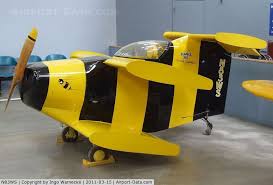
Bernstein home in Pueblo, Colorado
While searching my bookshelves for something to read, I came across The Search for Bridey Murphey. The book had belonged to my husband’s grandfather – a man who wrote his name and the date he acquired a book on the first page. He bought this copy sixty years ago, the year Doubleday first published this work by Morey Bernstein (1919-1999).
The book’s initial printing in January, 1956 was 10,000 copies. It quickly hit the New York Times best-seller list, where it remained for 26 weeks. By mid March, 200,000 copies were in print. The story was promptly made into a movie staring Louis Haywood and Teresa Wright. The book was reissued in 1965 and eventually published in 30 languages.
What was the great appeal of this story? Evidence of a woman’s previous life in another time. The fly page described it like this: “His subject, a young woman named Ruth Simmons [real name Ginni Tighe] had been put into a deep hypnotic trance in the presence of witnesses. A home tape recorder was turned on to record every step in the experiment, beginning with the age regression process… Bernstein…took his subject back to the age of seven, to five, to three, to one–and finally through the barrier of time itself. ‘I want you to keep going back,’ he told her, ‘back through space and time, and you will find there are other scenes in your memory – in some other place, in some other time’.”
Ruth recalled a past life in Ireland when she was known as Bridey Murphy. The book’s fly page reports she was “…born in Cork, in 1798, she grew into a spirited miss with a saucy tongue who married a young barrister and moved to Belfast. She died at the age of sixty-six.”
Of course, the book was controversial! There were stories that investigators in Ireland found no record of Bridey or her family. Newspapers reported parallels between incidents in Ruth Simmons’ life and the stories she told as Bridey. Regardless, the story was intriguing and remains so today. The book reports Mr. Bernstein’s prior experiments in hypnotism, information about Edgar Cayce who did “life readings” that identified individuals’ medical problems, and then contemporary research in the field of extrasensory perception.
After 20 years of reflection, Mrs. Morrow told The Times in 1976 she remembered nothing of what she said of Bridey Murphy under hypnosis but considered the recollections valid. She expressed personal ambivalence about reincarnation.
 One Hundred years ago on November 7, 1916 Jeanette Rankin (1880-1973) of Montana became the first woman elected to the U.S. House of Representatives.
One Hundred years ago on November 7, 1916 Jeanette Rankin (1880-1973) of Montana became the first woman elected to the U.S. House of Representatives. While visiting the Pima Air & Space Museum in Tucson, Arizona, I noted a great display of “firsts” by female aviators. These women overcame many challenges to fulfill their dreams of becoming pilots. Here are a few that stood out.
While visiting the Pima Air & Space Museum in Tucson, Arizona, I noted a great display of “firsts” by female aviators. These women overcame many challenges to fulfill their dreams of becoming pilots. Here are a few that stood out.







